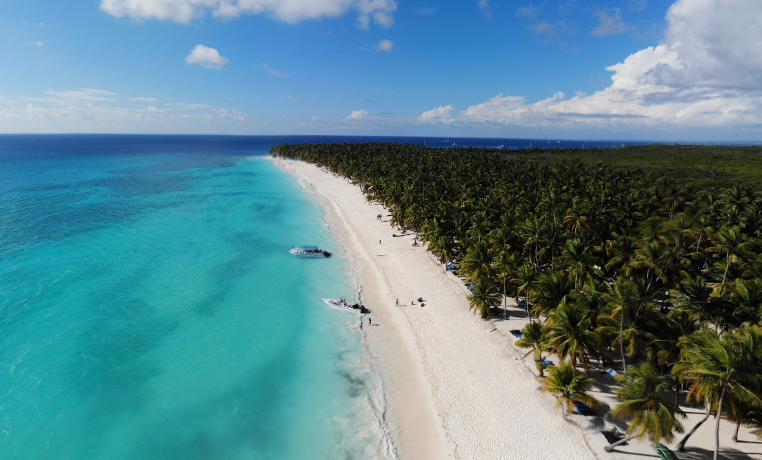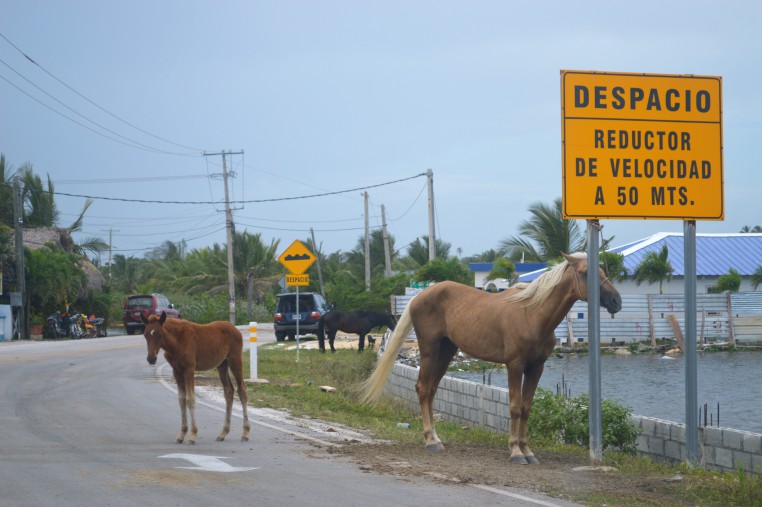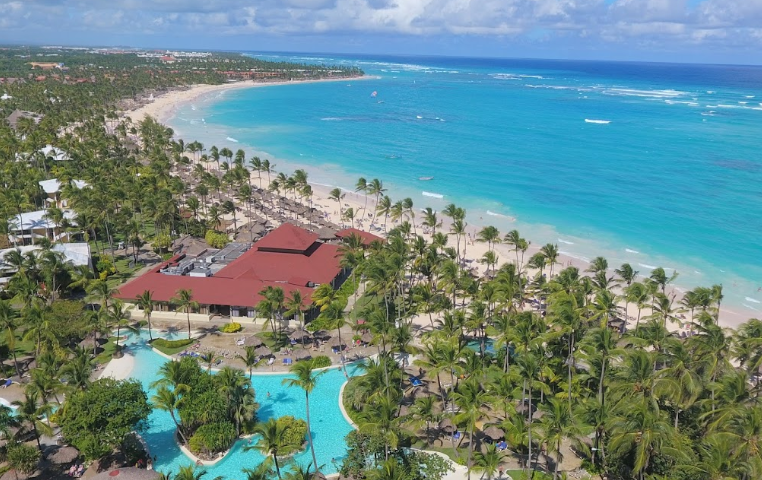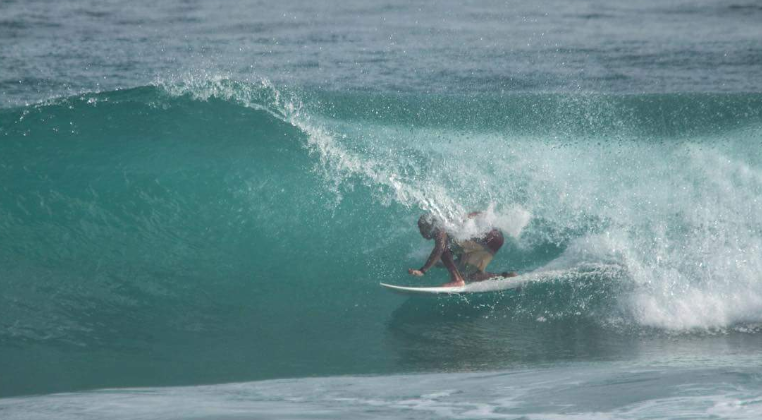
| KEY FACTS | |
|---|---|
| Size | 18,792 square miles (48,671 square kilometers) |
| Population | 10,800,000 (58% mixed, 16% black, 13.5% white, 12,5% other) |
| Status | independent country |
| Official language(s) | Spanish |
| GDP per capita (2018) | $7,932 |
| Currency | Dominican peso |
| Electricity | US standard two-prong |
| Driving | on the right |
A land of diversity, Dominican Republic is the second biggest country in the Caribbean by land and population, smaller only to Cuba. First visited by Columbus in 1492, it was quickly colonized by the Spanish. In fact, the settlement of Santo Domingo was the very first permanent European colony in the New World founded by Christopher Columbus’ brother, Bartholomew in 1496. At the time, the Spanish named the whole island where current day Dominican Republic is based “La Isla Hispaniola” (The Spanish Island) and ruled the eastern 2/3 of it, often mercilessly, for over three hundred years until 1821 when the Dominican people declared their independence. I mention 2/3 of the island’s territory as the eastern 1/3 of it has its own rich history that led to modern day Haiti. Needless to say, the Spanish gave up a third of Hispaniola in 1697 to the French, who lost its control in 1804 after a successful slave rebellion led by Toussaint L’Ouverture and Jean-Jacques Dessalines.
The Dominican people wrestled control of their territory not only from the Spanish, but also from the Americans and the country suffered many violent uprisings and shifts in power throughout the 19th and 20th centuries. It is only in the last two decades that the country’s political and economical situation has stabilized. And although the country is still struggling in many respects today and much of its population suffers deep poverty, Dominican Republic has grown tremendously in a short period of time as far as its tourist industry and it has done so for a good reason.
The territory has over a thousand miles of stunning sand beaches along its coast with a vast majority of them surrounded by shallow clear waters and impressive palm trees. The country is home to huge swaths of pristine jungle and tall mountain peaks whereas its cities are alive with colonial history as well as constant music and Latin dancing. With world class entertainment and dining, places like Punta Cana, Puerta Plata as well as the capital of Santo Domingo are now globally recognized tourist hot spots where one can truly never get bored. Also, if you are a fan of all-inclusive vacations, you will find that Punta Cana offers the best such vacation packages in all of the Caribbean at prices much lower than anywhere else. Therefore, if you think you may ever only be able to visit one place in all of the Caribbean, you should definitely consider this place to be the Dominican Republic!
Getting there
With seven international airports, Dominican Republic is the best air connected territory of the Caribbean. Americans can fly to the country non-stop from as many as ten cities throughout the US. The two most popular and easiest to get to destinations are Punta Cana International Airport (the biggest in the Caribbean!) and the Las Américas International Airport in Santo Domingo. Residents of Canada can fly to Dominican Republic from Toronto, Montreal, Ottawa and Quebec City. Finally, travellers from Europe have plenty of options as well. There are direct flights to Dominican Republic available from Madrid, Paris, Milan, Frankfurt and Brussels. Surprisingly, there are no direct flights available from London at the moment, though there are multiple options for quick connections via a US airport.
Getting around
The best way of getting around Dominican Republic depends on where you land/are based. For example, if you will stay most of your time around Punta Cana, good chances are you will be staying at an all-inclusive resort, which offers bus services from the airport as well as lots of options for local travel with other guests from your hotel. If on the other hand, you are staying in Santo Domingo, local taxis are your best bet and you may even be able to catch an Uber! Nonetheless, taxis are pretty expensive in Dominican Republic overall, so when it comes to traveling between the country’s various cities and town, you will be much better off using a privately owned bus or mini-bus, of which there are plenty – check out this list of some of the most highly ranked private bus companies.
Of course you can always go for a car rental, which is available from pretty much all the airports. However, consider that throughout Dominican Republic road conditions, signage and street lighting are all in a poor shape and are in need of significant investments. This means driving without a good knowledge of the terrain as well as the language is difficult. Nevertheless, if you do have the courage to rent take our advice (please!) and rent a 4-wheel drive Jeep type car. Not only will you drive more easily on dirt and side roads, you will actually be able to climb some of the biggest speed bumps in the world, which are present on many roads throughout Dominican Republic. A low car might get you stuck or you may inadvertently break its suspension.

Things to explore
It is impossible to describe all the amazing attractions of this large country in just a couple paragraphs. Hence, I will instead describe what you can to expect to find in the key neighbourhoods of Dominican Republic and their surroundings:
- Santo Domingo – the capital of Dominican Republic is also by far its largest city with as many as 3 million inhabitants. This means you will find here a very busy metropolis full of contrasts, and one that can be very exciting to explore, but also dangerous in certain parts and during certain hours. The most famous and architecturally stunning part of the city is Zona Colonial. This district of Santo Domingo feels stuck in time in the exact year of 1550 (or +- 50 years). Colourful Spanish buildings include renaissance-styled Alcaza de Colon from 1517, Monasterio de San Franciso, a Franciscan monastery from 1544 and Iglesia Santa Barbara, a fortress built in 1562. In fact, we could take hundreds of pages to describe all the amazing buildings in Santo Domingo, but even after we did that, there is still so much more to describe. The city has tens of museums, hundreds of historical statues, and thousands of fascinating shops, restaurants and bars. After entering the city you can pick a direction with your eyes closed and within 5 minutes of walking you will face something spectacular! And, if you ever get tired of the city, it is worth keeping in mind the city is a 30 minute drive away (also 10 minutes from the airport) from Boca Chica, beautiful seaside town with a stunning beach and a couple of good looking hotels.
- Punta Cana – after several decades of hotel development, the area of Punta Cana hosts more resort hotels than any other area in the Caribbean. The good reason for this aggregation is a 20 mile stretch of beautiful Bavaro beach and the peninsula of Uvero Alto characterized by shallow and turquoise coastal waters and gentle winds all year round. This is truly a beach bum paradise! And, besides the beaches, the area of Punta Cana hosts many attractions to explore. These include: Indigenous Eyes Ecological Reserve near Cap Cana resort, which has miles of beautiful trails and several natural pools, Scape Park also near Cap Cana and also home to a bush trail and a zip-line course as well as Rancho Caribeño in Uvero Alto where you can explore the beach and jungle trails on a horseback. One great destination to consider while staying in Punta Cana is an approximately 40 mile boat trip to Isla Saona, a protected and completely forested island, part of the East National Park. You can relax on the island’s beach or explore its stunning nature or both!
- Puerto Plata – beautiful historic city of Puerto Plata is also home to the “original Punta Cana” of Playa Dorada – a stunning stretch of beach populated by well-known hotels and located just a couple miles away from downtown of Puerta Plata. The city itself many spectacular sights including Fortress of San Felipe, nearby amphitheatre and a coastline boardwalk called Malecón De Puerto Plata. If you venture just outside the city to the south you will enter into Isabel De Torres National Park, which has a superb cable car taking passengers to a mountain top with incredible views out to Puerto Plata. A little further west near the town of Imbert, you will find a jungle park called 27 Charcos (27 Waterfalls), which properly reflects what you will find here. The waterfalls are very picturesque, but getting to some of them is not easy so an appropriate gear and a guide may be necessary.
- Santiago De Los Caballeros – another shining example of 16th century Spanish architecture, Santiago is the de facto cultural capital of Dominican Republic. Its Centro León doubles as a an art gallery and art museum and it is one of the best in the Caribbean on both accounts. Another good reason to visit the city is the impressive Monument to the Heroes of the Restoration built in 1944 to commemorate the Dominican War of Independence. And, if you are a true mountaineer, it only takes about a 90 minute drive from Santiago to Parque Nacional Jose Armando Bermúdez where you can ascent the biggest peak in the Caribbean called Pico Duarte. At over 10,000 feet, this is not an easy hike, but most amateur hikers in good health can reach the top in just a couple hours.
- La Romana – most well-known for the local resorts and beautiful beaches nearby, La Romana is a quintessential Dominican town full of contrasts reflecting of what life really looks like here. Some of the coolest things to do here involve taking a boat and the two must do destinations are Isla Saona and Isla Catalina National Park. The first was mentioned earlier as the large uninhabited island belonging to East National Park that can also be visited from Punta Cana, whereas the second one is only really feasible to visit from La Romana. Isla Catalina is a protected land with a beautiful stretch of white sand beach and a small dock for visiting boats and catamarans. It feels a thousand miles away from it all, but is only a 15 minute boat ride from the city.
- Samana – Samana is a name of a town as well as whole large peninsula located in the north east part of the country. The peninsula is famed for its beaches and beautiful and seemingly never-ending hills. Probably the most recognized beach is Playa Rincon, a long stretch of beach surrounded by forested hills and huge palm trees. But there are many other great beach spots here: Playa Coson, Playita Honda or Playa Moron to name just a few. The town of Samana itself is a lovely and relaxed place featuring a pretty boardwalk leading through a walking bridge to an island park called Puente Peatonal as well as nature center including a whale museum. In fact, Samana is departure point for whale watching trips in the Samana Bay, which can be a source of incredible sights from January to March.
Accommodations
Dominican Republic has accommodation catering to literally every taste. Of course, the large size of the country means you may need to compromise between where you are staying and the attractions you want to explore (unless your vacation is several months long!). It is appropriate to mention first the huge selection of impressive hotels in Punta Cana. We have counted as many as fifteen 4 and 5 star all-inclusive resorts here, some of which have their own water parks, casinos, golf courts and nightclubs. Some of them like the Royalton Punta Cana Resort & Casino even have all these things together in one place! Importantly, you can find options here for every budget and the all-inclusive option is most often included in the quoted price already. Having all the meals already covered is a big draw for many travellers, especially those coming with kids. The only one drawback to hotels in Punta Cana is that due to their large size and clustering along the Bavaro beach, getting privacy and peacefulness can be a problem. Therefore, our own favourite hotels in the region are two boutique hotels located at the far end of Uvero Alto. Those are Zoëtry Agua Punta Cana and Le Sivory Punta Cana By Portblue Boutique. Although not cheap and much separated from the main action, these two hotels offer high end accommodations in a beautiful setting and much of the desired privacy.

In Santo Domingo most hotels come without the all-inclusive option, but on the plus side, their prices don’t change as much due to seasons as they do in Punta Cana or Puerta Plata. You will find most hotels in the districts of Zona Colonial and Gazcue and most of them are small, boutique type accommodations with limited amenities, but very reasonable prices (under $150 per night). You can also find reasonable accommodations in downtown of Puerta Plata. The beach resorts in Playa Dorado are also reasonably priced and offer similar level of service as all-inclusive hotels in Punta Cana. In Samana, you will find the best hotels (and the most of them as well) in Las Terrenas whereas in La Romana your two main options are the big and renown (and expensive) Casa De Campo or Dreams La Romana, all-inclusive beachfront hotel just a short drive from the city and surrounded by a beautiful thick jungle.
Food & restaurants
You have not truly experienced life if you have not tried Sancocho meat stew and Arroz con leche pudding (at least in our opinion!). Dominican food is varied though heavy on the meat. Pork, beef and chicken are on every menu and made in tens of different ways. As far as carbs, expect menus to often contain Mofango (plantains served mashed and with pork) and for dessert you won’t be able to miss the above mentioned Arroz con leche, which is a pudding made of rice and served sweet.
The country’s restaurants are first class and you will find some of the best ones in the capital. The one recommendation to definitely check out here if you want to truly experience the Dominican culinary expertise is Meson D’Bari in Zona Colonial. The place has been around for decades and has on the menu all the Dominican classics on the menu made fresh and at decent prices.
If you are staying in Punta Cana you will likely eat a lot resort food (expect large buffets for breakfast, lunch and dinner). However, many hotel restaurants cater also to non-residents and operate as standalone restaurants for lunch and dinner. A good example is Playa Blanca, which is part of the Puntacana Resort and that serves contemporary seafood and tasty cocktails right on the beach of the same name. There are also quite a few high quality restaurants located in Cap Cana, which focus primary on dinner and so can be a great outing from your hotel if you are not staying too far. Its worth noting that dinner dress code in Dominican Republic is pretty formal. Men should (at a minimum) wear long sleeve collar shirt and khaki pants and a formal dress is expected for women.
Nightlife
Dominican cities do not sleep! Nightlife is part of the everyday here and expect to find Dominican bars and clubs bustling on every day of the week. In Punta Cana the nightlife centers around the hotels, many of which have expansive bars, clubs and nightclubs. You can walk between many of them along the beach where in fact, you are likely also to run into Latin music and dancing. Two of the best dance clubs in Punta Cana are Imagine and Pacha, both of which are home to large dance floors and many local DJs, who definitely know how to get the crowd going. Like all clubs in Dominican Republic, Imagine and Pacha get going around 11pm and close at 2am (mandated by local law). As far as casinos, you will find as many as ten here, several of which rival the best ones in Las Vegas. You will also find a couple casinos in Santo Domingo, but the capital city is much more known for its wine, cocktail and cigar bars, which are some of the best in the Caribbean. A good example is the Wine Tasting Room at El Catador, which doubles as a wine store and has in its stock hundreds of the best Dominican and international wines known to man. For a proper dance night, you have as many as ten clubs to choose from. Ow our personal favourite is the Mamma Club located in La Arboleda. Although Santiago, La Romana and Samana have less nightlife options than Santo Domingo and Punta Cana, you will find a good variety of bars and dance floors in each location.
Sports & adventure
The size and diversity of the country means that you can play pretty much every summer sport in the Dominican Republic and the list of adventures you can pursue is many pages long. It will be best to focus on a particular activity and discuss where you will find best opportunities to do it:
- Snorkelling and diving – you can snorkel for fish and coral on 90% of Dominican beaches and 90% of the time you will spot something interesting. When it comes to diving, however, the north coast is most popular especially around the area of Sosua and Samana. The 115 feet wall dive called the Airport Wall in Sosua is an experience like no other, though it does take some courage! In the south, the best diving is around Bayahibe where you will find an impressive shipwreck of St.George’s transport ship as well as a remarkable Penon Reef right by Saona island.
- Surfing – board, kite and windsurfing are a popular and yearlong activities in the Dominican Republic. However, you can expect to find the best waves during the winter months and in late summer. The north coast is generally considered best for surfing with a couple beaches being especially popular: Puntilla Beach in Puerta Plata, Coson Beach near Les Terrenas, and Encuentro Beach near Cabarete. For those vacationing in Punta Cana, your best bet is Macao Beach located about a half an hour drive north from the resorts.

- Hiking and climbing – Dominican Republic is a paradise for hikers with hundreds of miles of mountain, jungle and beach trails throughout the country. These trails vary greatly in their ease of access as well as safety. Hence, you may want to consider taking a group tour or hiring a guide for some of the more challenging walking trips. The biggest playground for hikers, climbers and bikers alike is the Jose Armando Bermúdez National Park located in the western part of the country. This is where you will find the highest peak in the Caribbean (Pico Duarte) together with an extensive range of +8,000 feet mountains. Although, there is so many more great hiking locations in the country, is impossible for us to list them all. However, if you are staying on the eastern side of Dominican Republic, one spot we definitely want to mention is Montaña Redonda, a peak located about an hour drive north from Punta Cana, from which you can see the ocean, lakes, and surrounding mountains for tens of miles out. And, you can stare out at all of them while swinging on a tall swing, which faces a steep drop below. Note, you will need to pay for parking and a bumpy ride to the top in a jeep (unless you are ready for a 2hr steep climb).
[embedyt]https://www.youtube.com/watch?v=2CG9s3xrP7g[/embedyt]
- Animal encounters – rich in fauna, Dominican Republic is a fantastic place to get closer to animals. One, quite unique experience for the Caribbean are whale watching tours that deploy from Samana. Not too far away near Playa Rincon is the nature preserve called Iguanario Los Tocones, where hundreds of iguanas roam freely and are not shy posing for pictures! Elsewhere in the north, Puerta Plata is a home to a large water park called Ocean World Adventure Park where you can observe sharks, swim with dolphins as well as watch intricate shows throughout the year. Finally, horseback riding is a popular activity throughout the country and especially on the coasts. There are many ranchos and farms offering tours, lessons or simple beach rides at reasonable costs. Near Punta Cana, the company with the highest ratings is Rancho Cana Tequila that offers multiple daily rides from early morning to late in the evening. There is also an extensive equestrian center located in La Romana and another one in Sosua, both of which offer training and trail rides and have very high reviews.
- Golf – arguably, the best place in the Caribbean for golfing, the tourist parts of Dominican Republic are densely populated with professional 18 hole courses. In fact, Punta Cana itself has seven of them! These include the well-recognized Punta Espada course located in Cap Cana, which witnessed many PGA Champions Tours and can be played by guests for under $400. Outside of Punta Cana, the best golf amenities are available in La Romana’s Casa de Campo Resort, which is home to multiple professional golf courses spread over several miles amongst beautiful nature.
- Other – zip-lining, buggy rides, fishing, baseball, soccer, kayaking, and beach volleyball are just some of the other popular things you can do here. Some will require you to travel to an adventure park like the Bavaro Adventure Park, while for others like soccer you may only need to walk over to the closest soccer pitch where you are likely to meet locals kicking around. Knowing basics of Spanish is useful and being good in soccer even better! Whatever you decide to do, it is very possible you can do more here than in anywhere else in the Caribbean.
Safety and security
Although the tourist areas of the country are relatively safe, overall crime rates in the Dominican Republic are high. This is especially the case in the big cities like Santo Domingo and Santiago where theft against locals and tourists alike is a notable problem. Hence, we recommend you keep your most valuable belongings at your hotel or in a safe place and do not venture out alone late at night or/and to the less attended neighbourhoods. Also, if you rent a park aim to park it in protected parking lots and do not leave valuables inside in plain sight. With all this said, however, the more violent crimes are rare in the Dominican Republic and you will find that police patrols are a common sight throughout many cities.
No post found!
